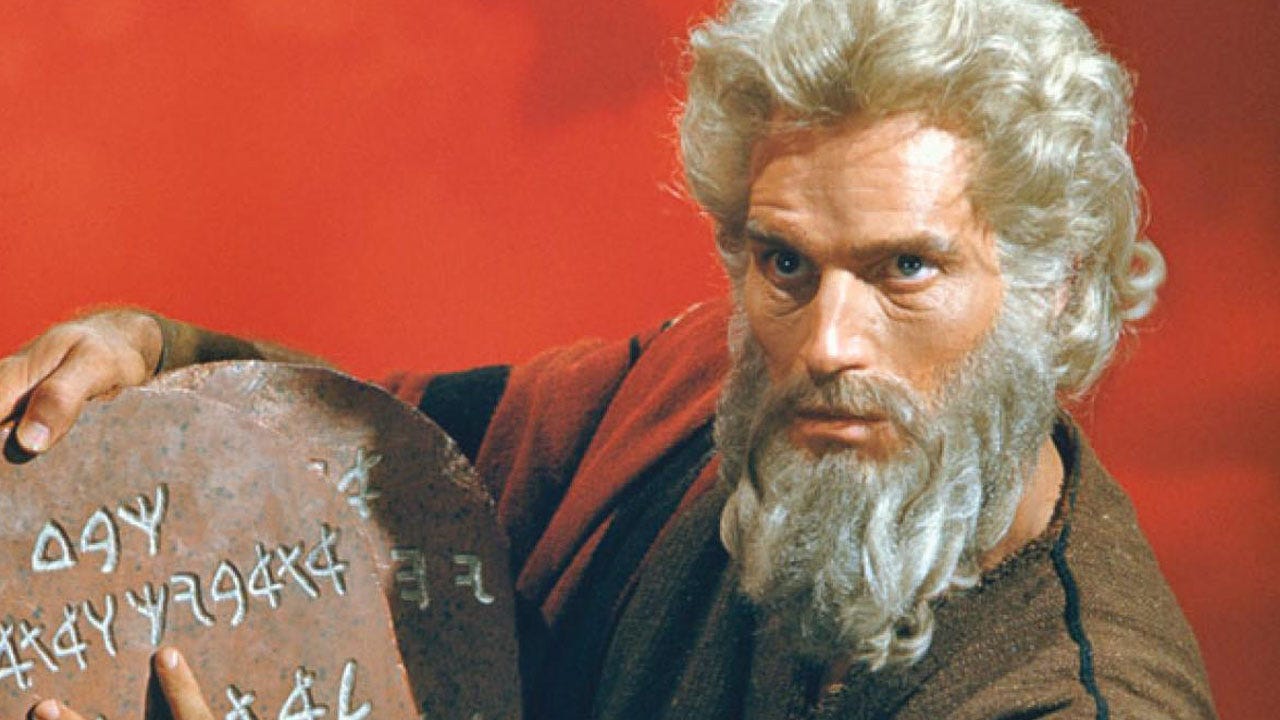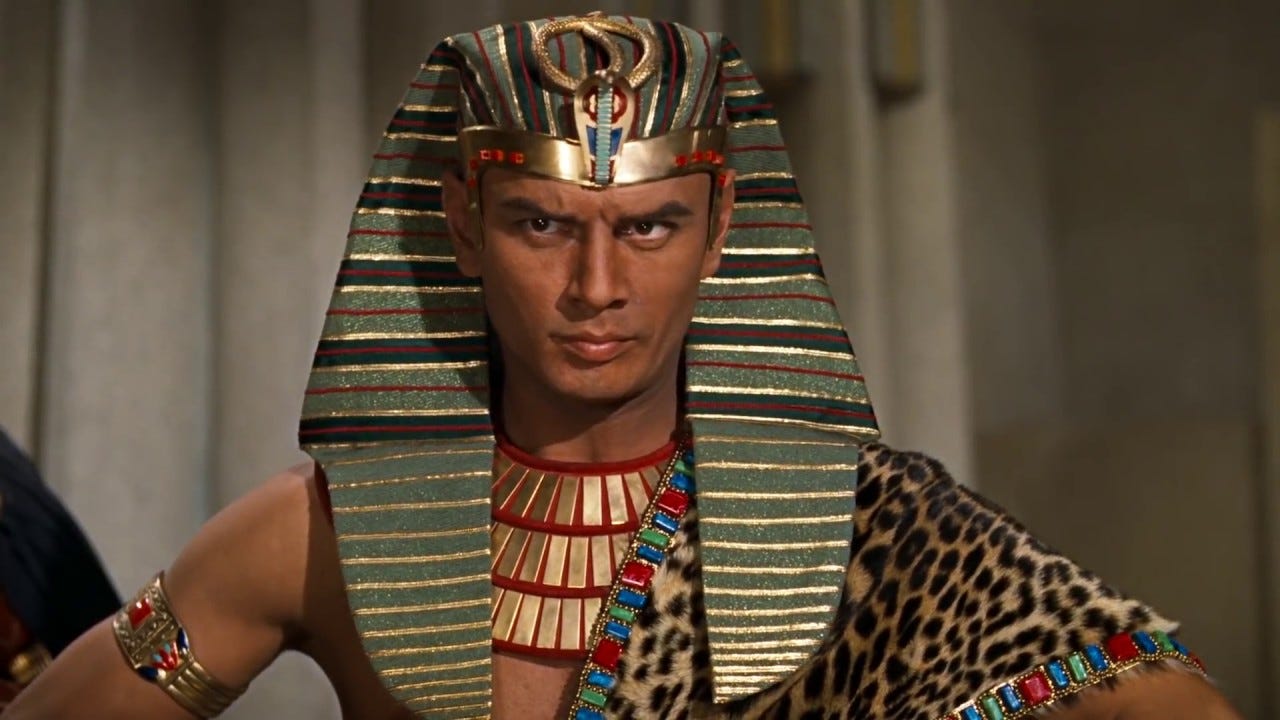Happy Passover
My first Seder
I was so excited when my good humored walking buddy and fearless friend, Rabbi Mike Comins and his lovely wife Jody invited Ellen and I to celebrate the Seder with them on the first night of Passover.
My first! And we’d be among other goyim we knew. Perfect.
Raised in a Christian tradition this sacrilegious heathen had always been curious about the ritual my favorite Nazarene celebrated every Passover and that would include his Last Supper in Jerusalem.
When I told my other Jewish friends I was attending my first Seder they offered me advice.
Eat beforehand.
It could go on for hours.
Count yourself lucky Mike’s not orthodox.
Do not attempt to ingratiate yourself by saying “Mazel tov” every two-minutes.
Do not attempt to ingratiate yourself by using use words like “putz”.
And a little homework couldn’t hurt, you putz.
Homework? Little did my friends know that I was already a respected authority on the subject of the Exodus thanks to my extensive study of the works of the great Biblical scholar Cecil B. DeMille, the man who typecast Charlton Heston, the greatest Episcopalian actor in cinematic history, as Moses.
The night before the Seder I panicked and did my homework, surfing through a number of Seder tutorials on YouTube. I settled on watching a Seder performed as a pandemic-related fundraiser over zoom by a cast of celebrities. It was fun to watch. Here’s the link:
Saturday Night Passover Seder featuring Jason Alexander, Billy Porter, Ida Menzel and more
Despite my nerves I knew we’d have a wonderful evening. Mike is a kind, creative and thoughtful friend who reassured me it would be a positive experience.
If you say so, Mike.
All I knew about Judaism was what I learned from movies. On one walk I mentioned to Mike the last time I watched “Fiddler on the Roof” I was shocked to learn something that amazed me.
“What’s that?”
“I’m now way older than the character Tevye.”
Sabbath Prayer "Fiddler on the Roof"
When Mike passed out our script for the night, a slim guide called the Haggadah, I wondered if we could have some Häagen-Dazs to go with our Haggadah. I’m proud I kept that question to myself.
As the Seder unfolded I was mesmerized by the profound meaning of this ancient ritual and question by question, toast by toast, prayer by prayer, I thought of the elderly survivors I had met here in Tucson who must have performed the very same ceremony hidden in attics.
Or in secret, in death camps.
I thought of the Jewish immigrants who celebrated Passover in the third-class steerage of steam ships heading for America while my Irish ancestors were right next door celebrating Easter by drinking a kind of Holy Water we call Guinness and singing mournful songs about our homeland. I’ve always believed there’s a deep bond between the Irish and the Jews based on our shared experience of fleeing persecution, being poor newcomers in America and facing the challenge of making the best out of potatoes for supper yet again. Really? potatoes, again? What’ll it be? Boiled? Baked? Fried? Latkes? Pancakes? Mashed? Powdered?
That bond is beautifully summed up in this song that was written in 1912. Give a listen to “If It Wasn't for the Irish and the Jews” performed by Bill Murray.
You’ll thank me.
"If It Wasn't for the Irish and the Jews"
You’re welcome.
As we prayed, sang and drank wine together I recalled being among a small group invited to witness the ceremonial interment of death camp cremains in the Jewish section of Evergreen Cemetery.
I recalled old Mr. Goldberg who lived alone across the street from us, who welcomed me into his wonderful warm home when I was a kid, gave me amazing homemade pastries, answered my questions about his funny little round cap and his prayer shawl and when I saw the numbers on his arm and asked him about them he told me his story. Being a kid, I could not fathom what he was telling me. Why would anyone want to kill Mr. Goldberg? I saw no great difference between us. Why would strangers want to murder your whole family? I was so confused.
I recalled the night when I was a 23-year-old kid flying alone to my mother’s funeral. My obvious despair moved the very elderly passenger next to me to offer his condolences. After a few words he humbly suggested I was blessed to know what had become of my mother.
“What?”
The old man rolled up his shirt sleeve to reveal he had survived a death camp. “The last time I saw my mother was when we were separated after being herded off the railcars.”
In that instant I recognized how blessed I was to have been able to embrace my mother and kiss her feet after she had fallen into her merciful coma just days before. We ended up sharing stories about our mothers. We even laughed a little. I’ll never forget his kindness. I think the dear old man had performed what is called a mitzvah without giving it a thought.
In common usage, a mitzvah often means “a good deed”
By coincidence, the week before Passover, I’d visited Tucson’s Jewish History and Holocaust Museum for the first-time. Go. It’s an amazing Tucson treasure located downtown on Stone Avenue between beautiful Armory Park and timeless Barrio Historico. Their modest Holocaust museum is world-class and the restored Synagogue is splendid.
Many Holocaust survivors settled here. They’re memorialized on a wall in the museum. I recognized a few I had met when I spoke to a group of survivors decades ago at the invitation of Jewish Family & Children’s Services. Later I accompanied a small group of survivors to Orange Grove Middle School and watched them enthrall 7th graders with their stories of survival, their resilience and their astonishing good humor.
Never forget.
It is a wonderful museum. Go.
As the prayers, herbs, wine and stories circled the table Rabbi Mike kept it relaxed and informal for us. Excuse me, Mike, who is this Prophet Elijah guy? Mike, why parsley? Mike, can I have Elijah’s wine if he’s not going to drink it?
The stranger who resides with you shall be to you as one of your citizens; you shall love him as yourself, for you were strangers in the land of Egypt.
Exodus 23:9
The telling of the exodus story took the form of a discussion prompted by four questions. Often families add creative touches to keep the Seder fresh and to hold the attention of the kids.
Mike asked me to participate in one of the discussions. Way to put the goy on the spot, Mike.
Oy.
Mike cast himself as a reporter from Sphinx News and he asked me to choose a character from the story to be interviewed. Sure. Why not? I decided to cast myself as Pharaoh.
“Welcome to our program, Pharaoh.”
“Thanks, Mike.”
“What are you up to, Pharaoh?”
Putting my own spin on the famous ruler I told him, ”We’re going to build a big beautiful pyramid. In fact, we’re going to build three. And the Jews are going to pay for it. Because they want to make Egypt great again. And by the way, the Jews love me.”
“They love you? They’re slaves!”
“We have no slaves in Egypt and even if they were slaves they’d be happy slaves.”
“They’re in bondage.”
“Look. Even if they were slaves, which they aren’t, I don’t think human bondage is so bad—and there are good people on both sides of that issue.”
“What about the plagues?”
“What plagues? Don’t fall for these lies. These stories about locusts, frogs and boils are all lies. And there’s no truth to the rumor I paid scribes hush money to keep it quiet. This Moses is a domestic terrorist. He hates Egypt! The man’s a liar.”
“So you freed the Jews...”
“More lies! I never freed any Jews, and, if I did, I sent my Egyptian Proud Boys after them in their big beautiful chariots to teach them a lesson.”
“Word is that the waters parted, Moses and the Jews escaped and your Proud Boys drowned. And Moses is leading his people to the Promised Land as we speak.”
“Mar-a-Lago?”
“We’re running out of time. Anything else?”
“Yes! I’m going to fund raise off this like you can’t believe. These plagues, which never happened, were a disaster for us. Disgusting. Terrible. It was so bad I ran out of paper towels to toss at the crowds and with your help we’re going to make Egypt great again...”
Well, at least I think that’s how it went. The Manischewitz wine may have clouded the accuracy of this lightweight’s recollection a little bit.
In the course of the Seder we discussed justice, Ukraine, anti-Semitism, plagues, locusts, killer bees, chupacabras, immigration, persecution, racism and how to make a “Hillel sandwich”.
A "Hillel sandwich" combines the bitter herbs with the sweet charoset, an apple and nut mixture, between two pieces of matzah, symbolizing the need to take the good with the bad.
After more prayers, wine and songs the Seder closed with those famous words from the Haggadah, “Next year in Dublin.”
Or maybe it was Jerusalem.
I didn’t pay close attention because our travel budget’s tight and we don’t get out much.
I learned a lot I did not know.
I learned about Nahshon, Miriam and Elijah and I learned Jody is a fantastic cook. After the Seder she treated us to soup and a spread that my relatives back in Queens would have described as “to die for.” Having just learned about the four kinds of children at the Seder—the wise, the simple, the incurious and the wicked— I was surprised Jody’s homemade desserts were so very, very, very wicked.
A paradox Mike and I will discuss on our next walk.
Our wonderful night ended with the traditional sharing of pictures of grandchildren, more stories, fond goodbyes, well wishes, warm hugs, a round of thank yous and more goodbyes. (We goyim take forever to leave.)
Mike and Jody, thank you for wonderful Seder. Happy Passover, dear friends.






As usual you brought joy, history and humanity to your first night Seder experience. Happy Easter
Thanks for sharing the experience of your first Seder. We at Vista de la Montana UMC had a proper
Seder meal several years ago, led by our pastor at the time, Monte Baker. It was a moving and lovely experience for us. Sounds like ours was a bit more traditional than your more up to date one.
Monte was a stickler for detail, and scoured several butcher shops all over Tucson to finally score a lamb shank. In your usual literary brilliance, you brought back pleasant memories.